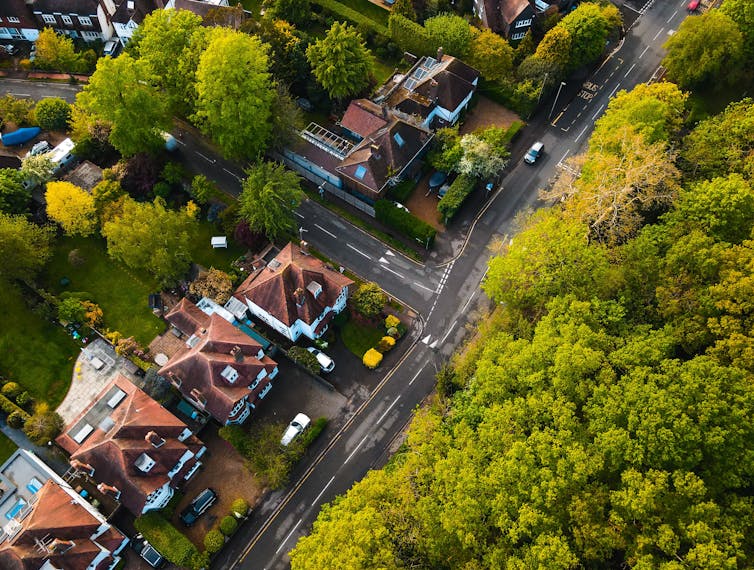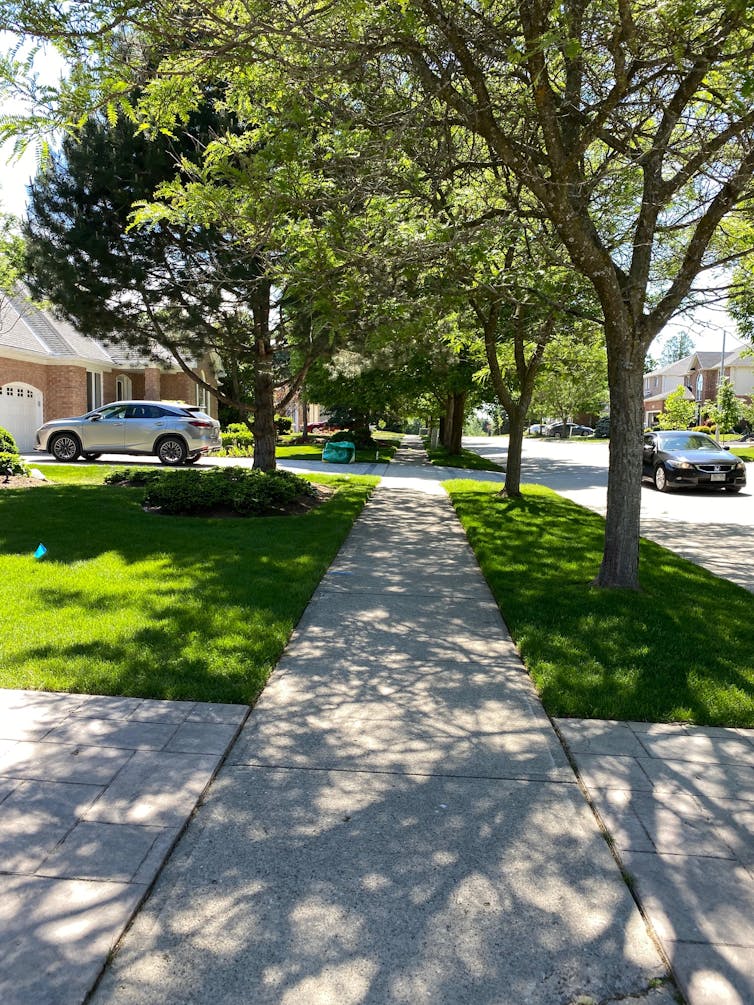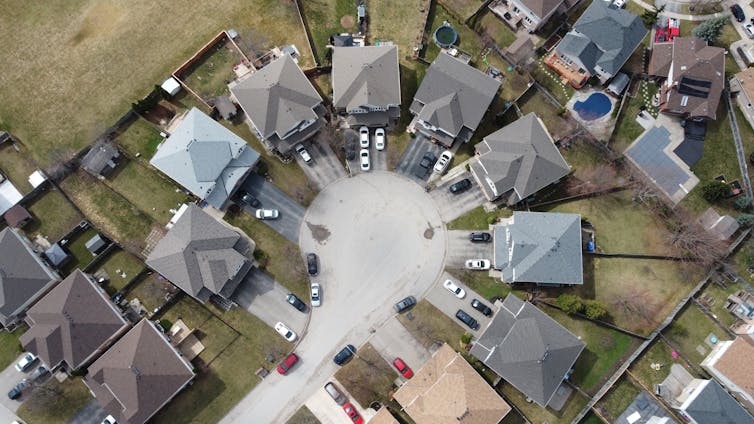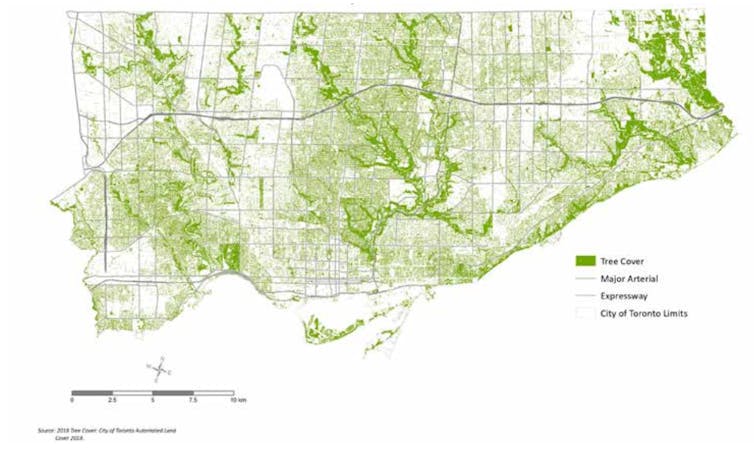
Canada is a highly urbanized country, with more than 80 per cent of residents living in urban centres. The urban population is growing by more than 400,000 annually, and these new urban residents need housing.
With affordable housing in decline, there are loud calls to massively increase the number of homes being built. Unfortunately, conventional residential development destroys large amounts of green space. The average greenness of urban areas across Canada declined five percentage points between 2001 and 2019, and even more in larger cities.
The loss of urban green space leads to increases in urban heat and flooding, which are amplified by climate change, and can threaten human health and well-being, and property. They also degrade natural ecosystems and the biodiversity they support.
Perversely, poorly planned cities themselves contribute to climate change. As Canadian cities move to tackle the housing shortage, they should take care not to worsen climate change and its impacts.
Urbanization and climate change
Heat waves can lead to heat-related illness and death, some of which might be avoided with increased urban tree canopy. Urban flooding due to increasingly severe storms can be reduced through well-designed green infrastructure, including green spaces. And urban green spaces can maintain biodiversity, including insects, birds and fish.

Although many Canadians consider a detached house to be their dream home, conventional residential development may worsen climate change. Most residential developments, whether infill or in previously open spaces, remove existing vegetation. This process releases stored carbon into the atmosphere and undermines future carbon storage potential.
A recent study found that each year, Canadian urban forests remove over 660 kilotonnes of carbon from the atmosphere. These climate change mitigation benefits are reduced when urban trees and green spaces are removed. Even when new landscaping is put in place, young trees and lawns do not provide the heat mitigation, flood protection and biodiversity support of more mature landscapes.
Most conventional residential developments also add large amounts of sealed surfaces, such as roads, sidewalks, driveways, patios and roofs to the urban environment. Rainfall runs off these sealed surfaces instead of being caught by vegetation or seeping into the ground.

The manicured lawns surrounding houses do not help much, and may contribute runoff polluted with fertilizer, pesticides and sediment. Runoff from sealed surfaces and lawns often flows into creeks, rivers and lakes, where it decreases water quality.
Alternatively, runoff may be collected in engineered storm water management ponds, which can be effective if managed well. But if poorly designed and managed, they can be a significant source of urban greenhouse gas emissions including methane, further intensifying climate change.
What cities do to fight climate change
By early 2022, over 600 Canadian municipalities had declared a climate emergency. Some of them are taking action by conserving natural ecosystems and better integrating them into their operations. Others are beginning to use green development standards to guide developers in building more sustainable communities.
Even so, 78 per cent of large Canadian cities have continued to lose tree canopy over the past 20 years. This may be because green space conservation and creation are not well incentivized in the planning and development process.

Municipal governments are accountable for their financial expenditures to their local residents, and residential development is a business that needs to generate a profit. But while improved green spaces may generate small premiums for environmentally oriented home buyers, land developers are not compensated for the public goods these green spaces provide.
Cities need new ideas that go beyond green infrastructure checklists that incentivize developers only to fulfil minimum expectations and do not take the future climate change performance of these natural assets into consideration.
Research must help cities fight climate change
To address this problem, we need better data on the impact of residential developments on the natural environment. We need to create carefully and rigorously designed studies that address the wicked problem of the housing, climate and biodiversity crises.
These studies must assess residential developments, vegetation changes, water flows, greenhouse gas emissions and biodiversity impacts — all integrated into one complex system. They must assess building sites before and after development, projecting and comparing future environmental conditions. And they must support the development of reasonable and economically feasible residential plans that incentivize developers to choose designs that minimize environmental impacts or enhance the urban natural environment.
To drive change toward more environmentally friendly residential developments, we must go beyond typical scientific studies and instead present results in formats that are useful for municipal decision-makers, developers and future home buyers. Cities can then work with developers to identify the best elements of landscape design to implement into the development of the site.
Tools that show how natural assets such as trees and green spaces will perform in the future will highlight those developments that will make strong environmental contributions. This will provide progressive developers with a marketing and reputational edge.
This approach gives municipalities the evidence they need to argue for more environmentally friendly landscape designs. It gives developers the opportunity to innovate. And it gives future home buyers the chance to choose houses that help them lead more sustainable lives.
As a society, we should not solve the housing crisis by amplifying the climate and biodiversity crises. We can and must do better.
Michael Drescher, Associate Professor, School of Planning, University of Waterloo; Dawn Parker, Professor in the School of Planning, Faculty of Environment, University of Waterloo, and Rebecca Rooney, Associate Professor, Department of Biology, University of Waterloo
This article is republished from The Conversation under a Creative Commons license. Read the original article.











